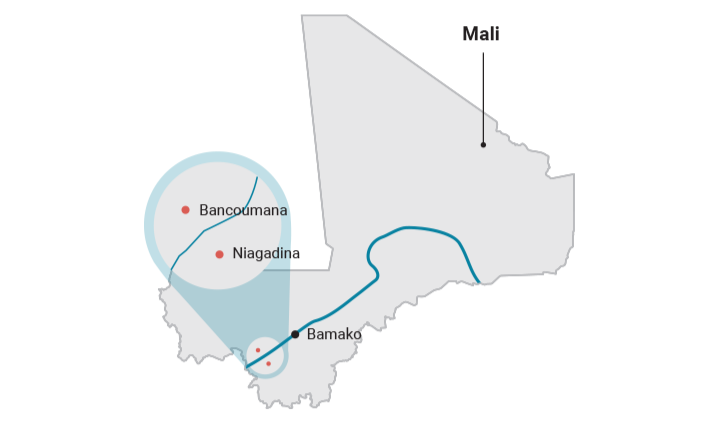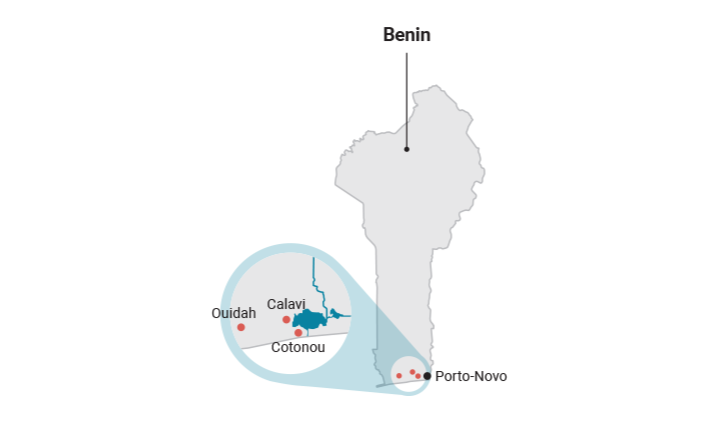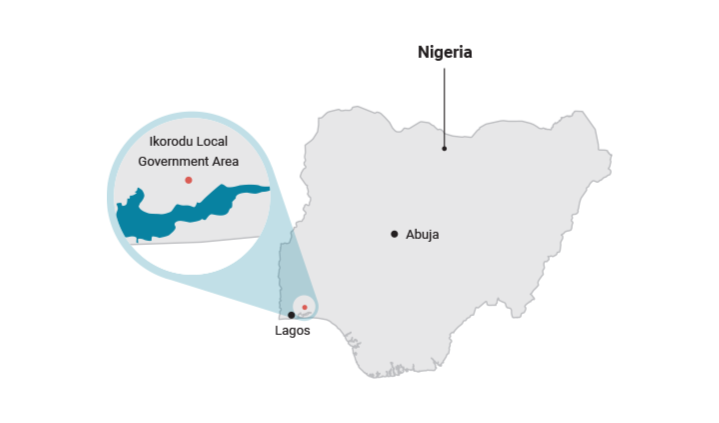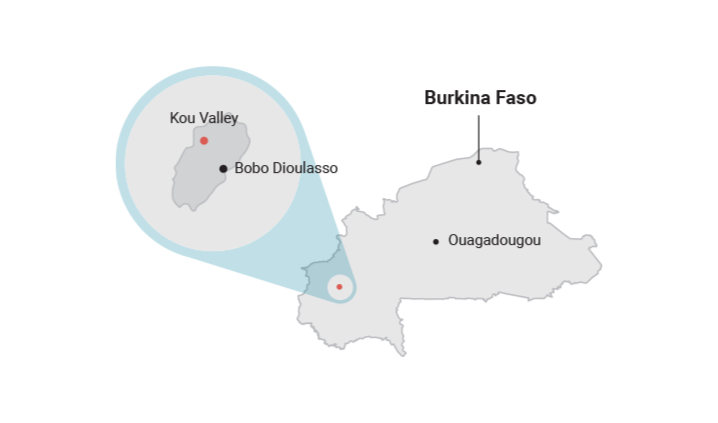Research Sites
Research sites
The study will be conducted across sites in four countries: Mali, Benin, Nigeria and Burkina Faso.
Mali
The study will be carried out in the fishing hamlets located along the Niger River in the communes of Bancoumana and Niagadina, in the district of Kati, 60 km south-west of the capital of Bamako.
Previous studies in the area have shown that during the dry season, water pockets are created in the riverbeds of the Bani and Niger Rivers following the receding of the water. This creates an ecosystem suitable for anopheline larvae breeding which maintains malaria transmissions throughout the dry season.

Benin
Two types of sites will be selected during the course of this study: a set of three control sites; and a second set of three sites where farmers use synthetic agro-insecticides. The six sites will be selected in the southern localities of Benin, around the urban settings of Cotonou, Calavi and Ouidah.
Previous research has shown that vegetable farmers in Benin use a wide range of insecticides and other agrochemicals. We anticipate that a rational use of pesticides by farmers will reduce presence of pesticide residues in farms (plants, water and soil) therefore, reducing the insecticide resistance selection pressure exercised by these agrochemicals in Anopheles populations.

Nigeria
A previous multicentre study reported the impact of insecticide resistance on usage of long-lasting insecticide nets from four sites: Imota, Igbogbo-Baiyeoku, Oreta and Igbokuta in the Ikorodu Local Government Area located in the outskirts of Lagos. Further research will be conducted in this region to determine the insecticides residue concentrations in LLINs sold in markets.

Burkina Faso
Five rice production sites will be selected in the Kou Valley, a rice-growing perimeter developed since 1970 covering an area of 1,200ha.
The irrigation system of the plains is based on a diversion of the river Kou which is the permanent source of water supply. Because of the irrigation system and the availability of water, the rice pits are constantly creating highly productive breeding sites for culicidae, specifically An. gambiae and An. coluzzii. The kdr and ace-1R mutations are present in both of these species making this site a zone of multi-resistance.


